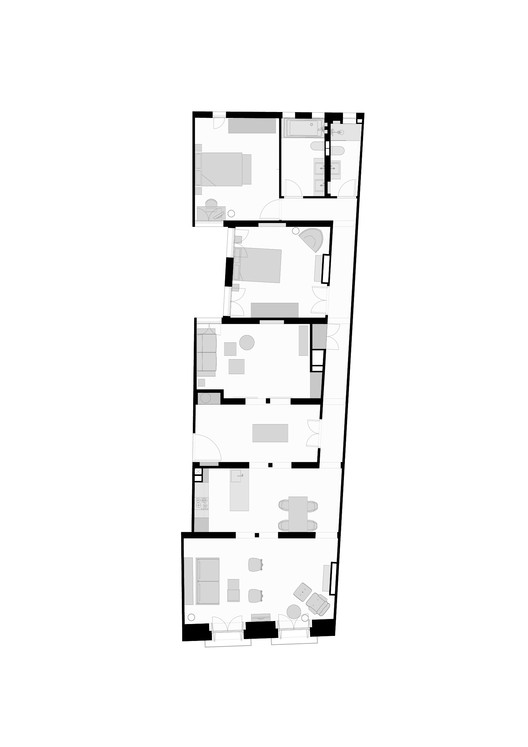
-
Architects: Carlos Manzano Arquitectos
- Area: 161 m²
- Year: 2018
-
Photographs:Amores Pictures
-
Manufacturers: GIRA, Arkoslight, Clever, Roca, Irsap, Julio Centeno Arce, Neff, SANTOS, TOPCRET
-
Lead Architect: Carlota Manzano

Text description provided by the architects. The second floor of a centennial building in the heart of Madrid is transformed into a short-stay rental apartment. When the owner inherited her childhood home and returned 45 years later she found the house just as she remembered. She found an apartment divided into innumerable little tiny rooms, with high ceilings, a long corridor, tiled floors, and ocher-colored windows. This was her childhood home, but this time she saw something different: potential and a challenge. The Project of renovation pursues two fundamental premises: to Highlight the characteristic features of the original construction and to Rethink its distribution to accommodate it for its contemporary use.

























